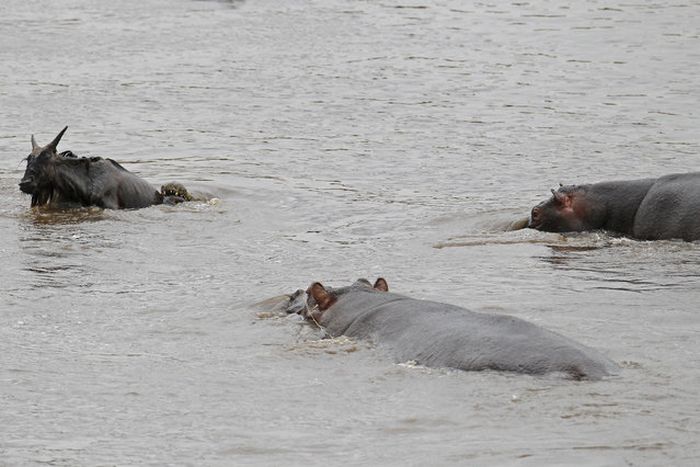|
|
Hippopotamus Saves Wildebeest From Crocodile
|
The wildebeest, also called the gnu is an antelope in the genus Connochaetes. It belongs to the family Bovidae, which includes antelopes, cattle, goats, sheep and other even-toed horned ungulates. Connochaetes includes two species, both native to Africa: the black wildebeest, or white-tailed gnu (C. gnou); and the blue wildebeest, or brindled gnu (C. taurinus). Fossil records suggest these two species diverged about one million years ago, resulting in northern and southern species. The blue wildebeest changed very little from the ancestor species, while the black wildebeest took on more morphological changes to adapt to a habitat of open grassland in the south. Today, the blue wildebeest has five subspecies, while the black wildebeest has no named subspecies. In East Africa, the wildebeest is the most abundant big-game species, both in population and biomass.
Etymology
The wildebeest (/ˈwɪldəbiːst/ wil-də-beest or /ˈvɪl-/ vil-, plural wildebeest or wildebeests, wildebeesties (juv)), also called the gnu (/ˈnuː/ noo or /ˈnjuː/ new) is an antelope of the genus Connochaetes. Wildebeest is Dutch for "wild beast" or "wild cattle" in Afrikaans (bees = cattle), while Connochaetes derives from the Greek words κόννος, kónnos, "beard", and χαίτη, khaítē, "flowing hair", "mane". The name "gnu" originates from the Khoikhoi name for these animals, t'gnu.
|
|









